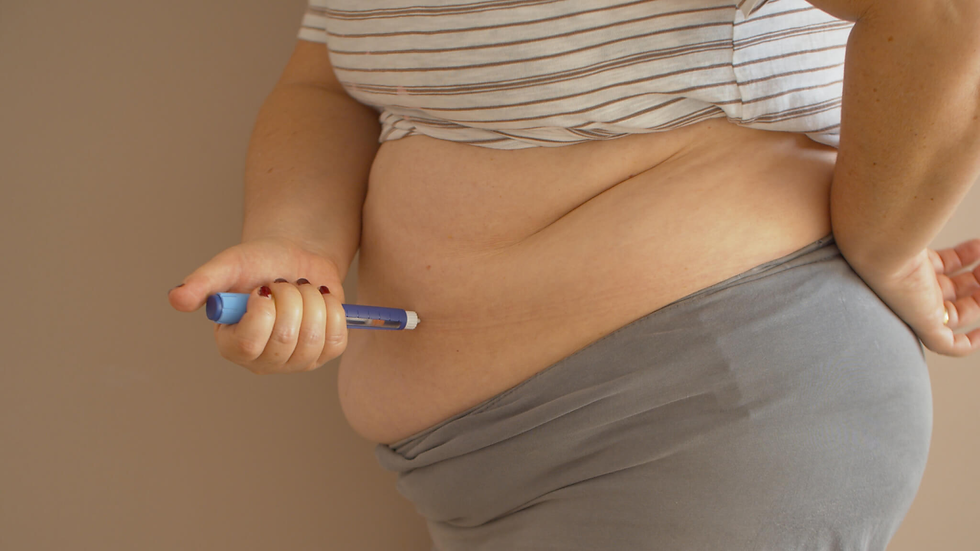Understanding the Risks and Side Effects of Under Eye Fillers in Dubai
- kishwar adnan
- Aug 24, 2024
- 4 min read
Under eye fillers are a popular cosmetic procedure in Dubai, offering a quick and effective way to reduce dark circles, hollows, and signs of aging. However, like any cosmetic treatment, Under Eye Fillers In Dubai come with potential risks and side effects. Understanding these risks is crucial for anyone considering the procedure.
What Are Under Eye Fillers?
The Purpose of Under Eye Fillers
Under eye fillers are typically used to add volume to the under eye area, smooth out fine lines, and reduce the appearance of dark circles. The treatment involves injecting a substance, usually hyaluronic acid, into the skin to achieve a more youthful and rested appearance.
Types of Fillers Commonly Used
Hyaluronic Acid Fillers: These are the most common type of fillers used under the eyes. They are popular due to their natural appearance and ability to be dissolved if needed.
Other Fillers: While hyaluronic acid is most commonly used, other fillers may also be employed depending on the specific needs of the patient
Common Side Effects of Under Eye Fillers
Immediate Side Effects
Like any injectable treatment, under eye fillers may cause some immediate side effects.
Swelling and Bruising
Swelling and bruising are the most common side effects immediately following the procedure. These symptoms are usually mild and subside within a few days.
Redness and Tenderness
The injection sites may appear red and feel tender for a short period after the treatment. This is a normal response to the procedure and typically resolves quickly.
Temporary Lumps or Bumps
Sometimes, patients may notice small lumps or bumps under the skin where the filler was injected. These are usually temporary and can often be massaged out by a professional.
Mild Discomfort
Some discomfort or a feeling of tightness in the treated area is normal and usually subsides within a few hours to a day.
Potential Risks of Under Eye Fillers
Allergic Reactions
Although rare, some individuals may experience an allergic reaction to the filler substance.
Symptoms of Allergic Reactions
Itching or Rash: Some patients may develop a rash or itching at the injection site.
Swelling Beyond the Injection Area: In severe cases, swelling can extend beyond the under eye area.
Infection
Infections are rare but can occur if the procedure is not performed under sterile conditions or if aftercare instructions are not followed.
Signs of Infection
Increased Pain or Swelling: Pain or swelling that worsens after the procedure could indicate an infection.
Fever or Chills: The presence of a fever or chills following the treatment is a sign that medical attention may be needed.
Tyndall Effect
The Tyndall effect is a rare but possible side effect where the skin takes on a bluish tint due to the filler being placed too close to the surface.
How to Address the Tyndall Effect
If this occurs, the filler may need to be dissolved using an enzyme called hyaluronidase to correct the issue.
Overfilling or Uneven Results
Overfilling can occur if too much filler is injected, leading to an unnatural appearance.
Correcting Overfilled Areas
In cases where the filler appears uneven or excessive, it can often be adjusted or dissolved by a qualified practitioner.
Migration of Filler
Filler migration refers to the unintended movement of the filler from the original injection site, which can lead to asymmetry.
Monitoring and Addressing Filler Migration
If migration occurs, it may be necessary to have the filler dissolved and reinjected properly.
Long-Term Considerations
Repeated Treatments
While under eye fillers are not permanent, repeated treatments may be necessary to maintain results.
Cumulative Effects
Repeated injections over time can lead to changes in the skin's texture or firmness, making it important to have treatments performed by a skilled professional.
Potential for Scar Tissue
In rare cases, repeated injections can lead to the development of scar tissue, which may affect future treatments.
Safety Precautions and Aftercare
Choosing a Qualified Practitioner
Selecting a qualified and experienced injector is critical to minimizing risks and ensuring the best possible outcome.
Importance of Consultation
A thorough consultation with your practitioner can help identify any potential risks based on your medical history and skin type.
Following Aftercare Instructions
Adhering to aftercare guidelines is essential to reducing the risk of complications.
Key Aftercare Tips
Avoid Touching the Area: Refrain from touching or massaging the under eye area unless instructed by your practitioner.
Stay Hydrated: Keeping your skin hydrated can help with the healing process.
Avoid Strenuous Activity: Avoid heavy exercise or activities that could increase swelling in the first 24-48 hours after treatment.
Knowing When to Seek Help
Understanding when to contact your practitioner is important for addressing any potential issues early on.
Signs That Require Attention
Prolonged Swelling or Bruising: If swelling or bruising persists beyond a few days, it’s important to seek professional advice.
Severe Pain: Unusual or severe pain following the procedure should be evaluated by a professional.
Conclusion
Under eye fillers are an effective and popular cosmetic treatment in Dubai, offering noticeable improvements with relatively minimal downtime. However, it is important to be aware of the potential risks and side effects associated with the procedure. By choosing a qualified practitioner, following proper aftercare, and being informed about the possible outcomes, you can minimize these risks and enjoy the benefits of a rejuvenated appearance.








Comments